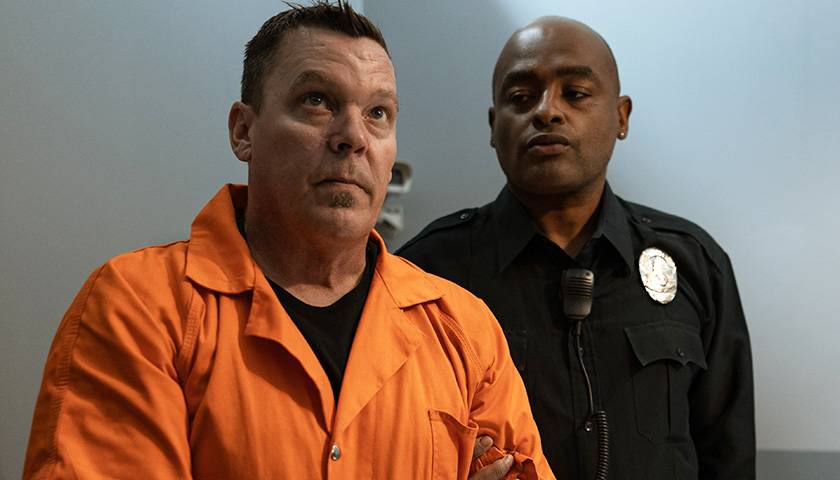by Douglas Carswell
Over the past decade or so, America has undertaken a radical experiment with criminal justice reform. The consequences have been devastating.
The number of people arrested in America each year has fallen sharply over the past two decades. Public prosecutors now prosecute significantly fewer cases. Those that are convicted can generally expect shorter sentences. The combined effect of all this is that America’s prison population is now 25 percent lower than it was in 2011.
Part of the reason for this policy change has been pressure from the far left. Ever since the death of George Floyd in 2020, left-wing activists have pursued an explicitly anti-police and anti-prison agenda. But even before that, there were plenty of well-meaning conservatives who signed up for criminal justice reform, too. Everyone needs a second chance, right?
Five years ago, it was conservatives in Washington DC that passed the First Step Act, which explicitly sought to reduce the prison population. Here in my own state of Mississippi, those elected as conservatives have for the past decade been formulating policy in the belief that there are better ways of preventing crime than filling up our jails. Our state’s incarcerated population decreased from over 21,000 in January 2014 to 16,931 by January 2022, a decrease of 19.4 percent.
Reducing the number of people arrested, prosecuted, and jailed might sound like a good thing, but it has helped lead to a sharp spike in crime – including violent crime – in specific parts of the country.
In 2013, the year before Mississippi conservatives decided to go soft on sentencing laws, 28 people were murdered in our state capital, Jackson per 100,000 residents. By 2021, almost four times that number were being murdered, with 101 homicides per 100,000.
Saying you want to give convicted felons a second chance might make believe you are one of the good guys in your low-crime neighborhood. In Jackson, Mississippi, and thousands of similar communities across America, releasing convicted felons means more murder.
Crime, according to Rafael Mangual, a senior fellow of the Manhattan Institute who was in Mississippi last week to talk to policymakers, is highly concentrated geographically. Two percent of counties in America see something like 50 percent of the murders each year. Half the counties in the country won’t typically see any murder in certain areas in America.
Mangual’s brilliant new book on the consequences of naïve criminal justice reform, Criminal (In)Justice, spells out some even more uncomfortable facts about crime.
Not only is crime geographically concentrated, it is demographically concentrated, too. The victims of violent crime are disproportionately African American. The increase that there has been in violent crime in America in recent years has disproportionately impacted African Americans, too.
Conversely, Mangual shows, when the police, prosecutors and the courts do decide to get tough on violent offenders, and crime rates fall, the beneficiaries are overwhelmingly African American. In other words, the communities that have borne the cost of this unsuccessful experiment in criminal justice reform have largely been those communities that many reformers claimed to want to help.
In recent years, many on the left have made the claim that America’s police and criminal justice system is systemically racist. This Mangual suggests is dangerous nonsense.
It is nonsense because as the evidence shows, different outcomes in the criminal justice system do not reflect supposed biases of the criminal justice system, but are reflective of offender behavior. It is dangerous because by undermining the moral authority of law enforcement certain communities in America, such as Jackson, Mississippi, are made effectively lawless.
When state officials, as has happened in Mississippi, then try to step in to try to ensure that there is basic law and order in communities devastated by crime, they face the inevitable, and asinine, accusation that they are being racist. The absurdity would be comic if the consequences were not so murderous.
A curious coalition between prison abolitionists on the left and what one might call conservative rehabilitationists on the right has significantly cut the US prison population. Rather than lock people up, so the reformers tell us, shouldn’t we rehabilitate them? Would it not be better if former criminals became useful members of society instead?
There is, alas, precious little evidence that releasing felons from prison leads to redemption. The average released state prisoner in the United States has approximately five prior convictions. A second chance? It sounds like five chances.
The narrative of redemption is powerful. But often it turns out to be fiction. Approximately 80 percent of released state prisoners will be rearrested at least once over a 10-year period after their release.
Rehabilitation is a noble goal, but it should never detract from the reality that prisons primarily exist to lock up bad people so that they cannot do bad things to good people.
Mangual’s book should make uncomfortable reading for those conservatives that have gone along with the criminal justice reform agenda in recent years. There is nothing good or kind – or indeed conservative – about misplaced criminal justice reform.
– – –
Douglas Carswell is the President & CEO of the Mississippi Center for Public Policy.
Photo “Police Officer and Jail Inmate” by RDNE Stock project.





